"We are not afraid, we have sailed home." Ukrainska Pravda on high water and evacuation in Kherson
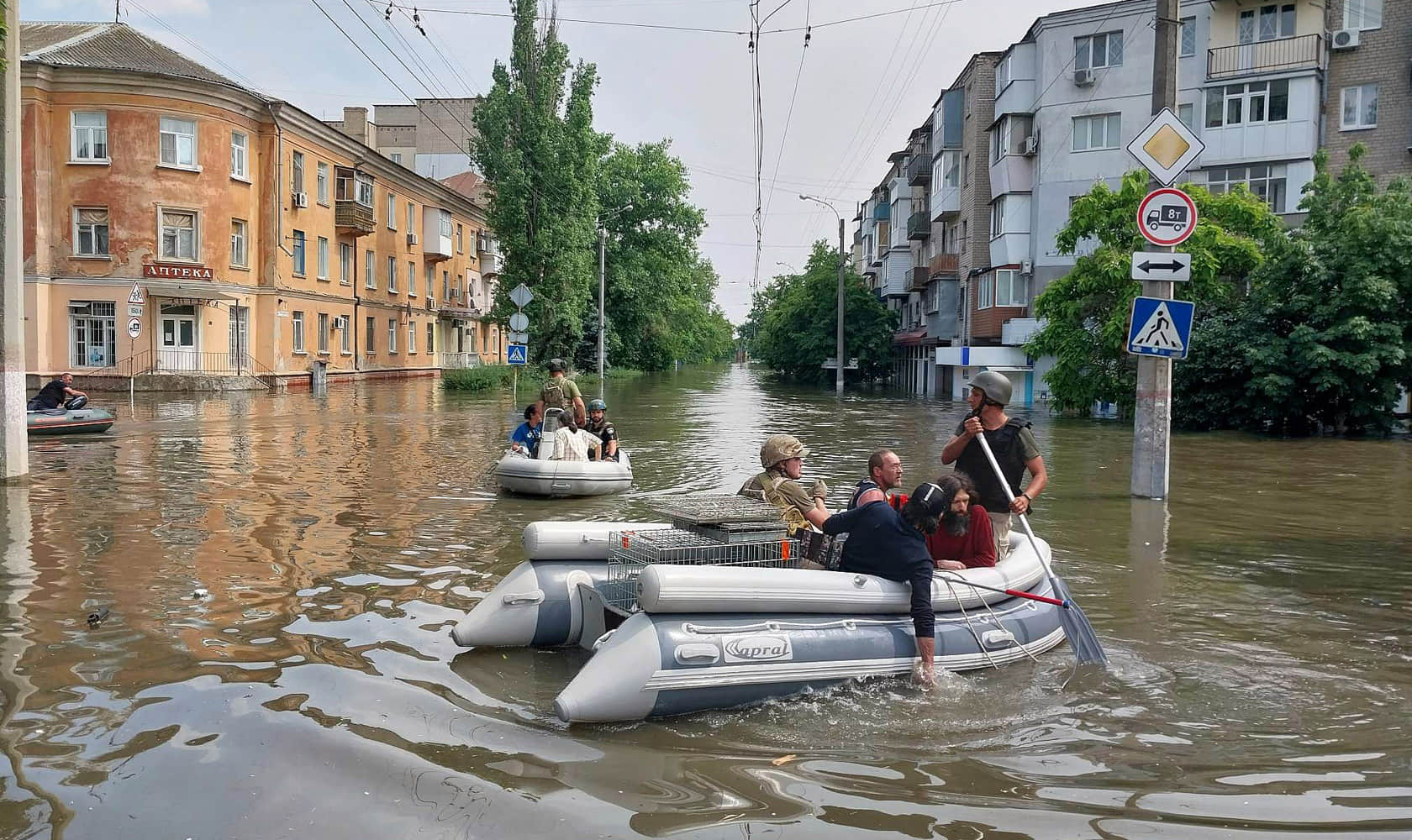
"Finally, dry land!"
These are the words most often heard from the mouths of evacuated Kherson residents who were forced to leave their homes due to the arrival of high water.
Over the past year and a half, the people of Kherson and the surrounding settlements have been under occupation, experiencing the happiness of liberation, which was replaced by grief from daily artillery shelling.
However, fate continues to test the strength of Kherson residents. After the Kakhovka hydroelectric power plant was blown up, water poured into the city.
How does Kherson confirm its status as a hero city? How are the townspeople helping each other to survive the consequences of Russian aggression? And how are the early days of evacuation from the flooded areas of the Kherson region going? Ukrainska Pravda reports from the scene.
Evacuation in the nick of time
"How many cubic metres of water have arrived in Kherson?" a representative of a well-known Western media outlet asks a minister in Kyiv.
This seemingly logical question slightly nonplusses not only the official himself, but also the other journalists.
Although we know the approximate volume of the Kakhovka reservoir, it is impossible to say how much water poured into Kherson after the Kakhovka hydroelectric power plant was blown up.
Firstly, water is continuing to arrive in some places. Secondly, everything is now measured in metres of water level, not volumes.
As of 7 June, the peak level reached 5.34 metres on the right (western) bank.
The final peak, which has been expected for two days, has not yet passed.
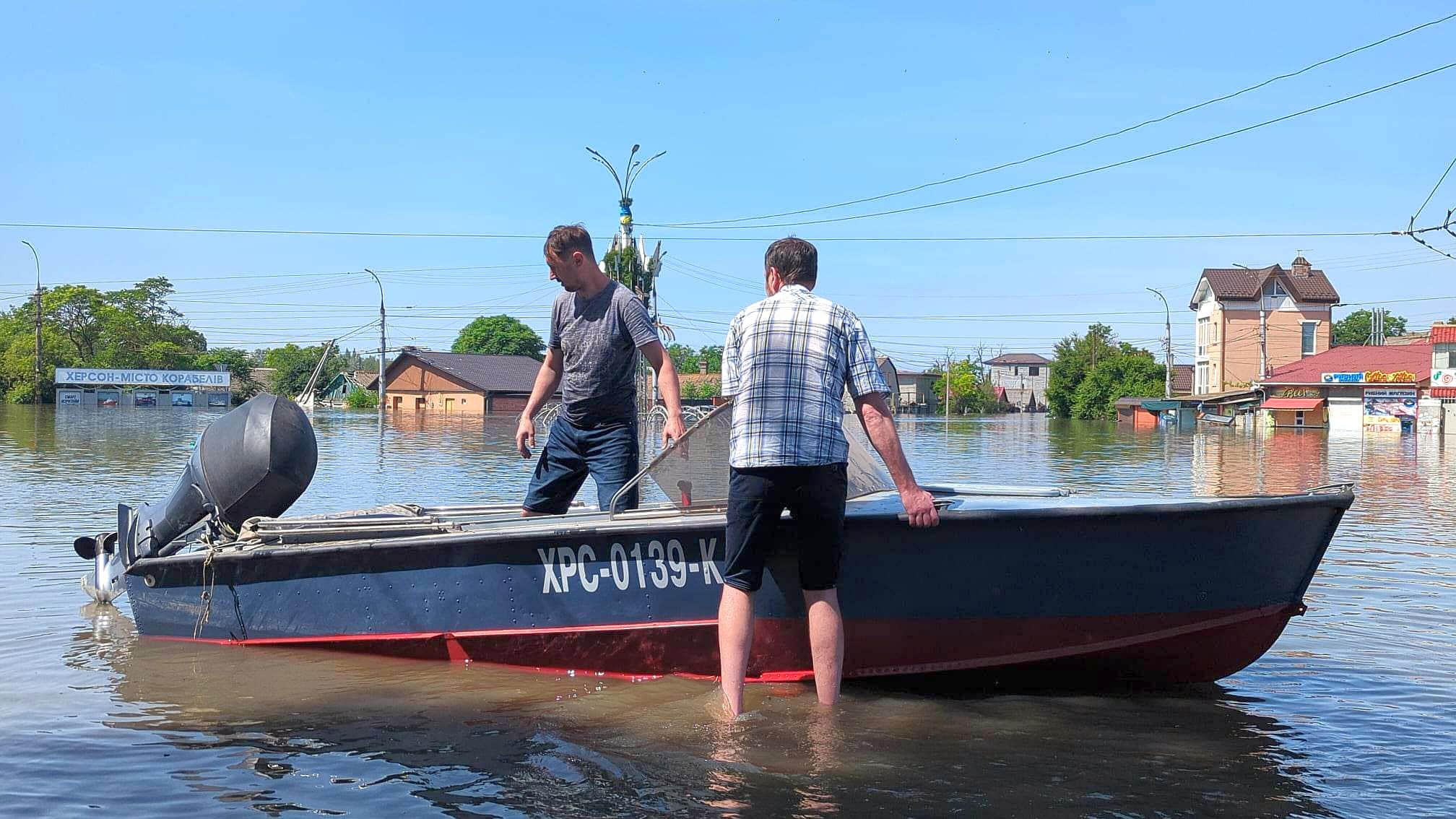

The [Russian-occupied] left bank in Kherson Oblast is suffering the most from the water. Ukrainians feel burning pain when they hear the calls for help from residents of Oleshky, Hola Prystan and other occupied territories.
The districts of Korabel, Shumenskyi and part of Dniprovskyi in Kherson are already floating in low-lying areas. In some places, the water has reached the first or second floor of apartment buildings.
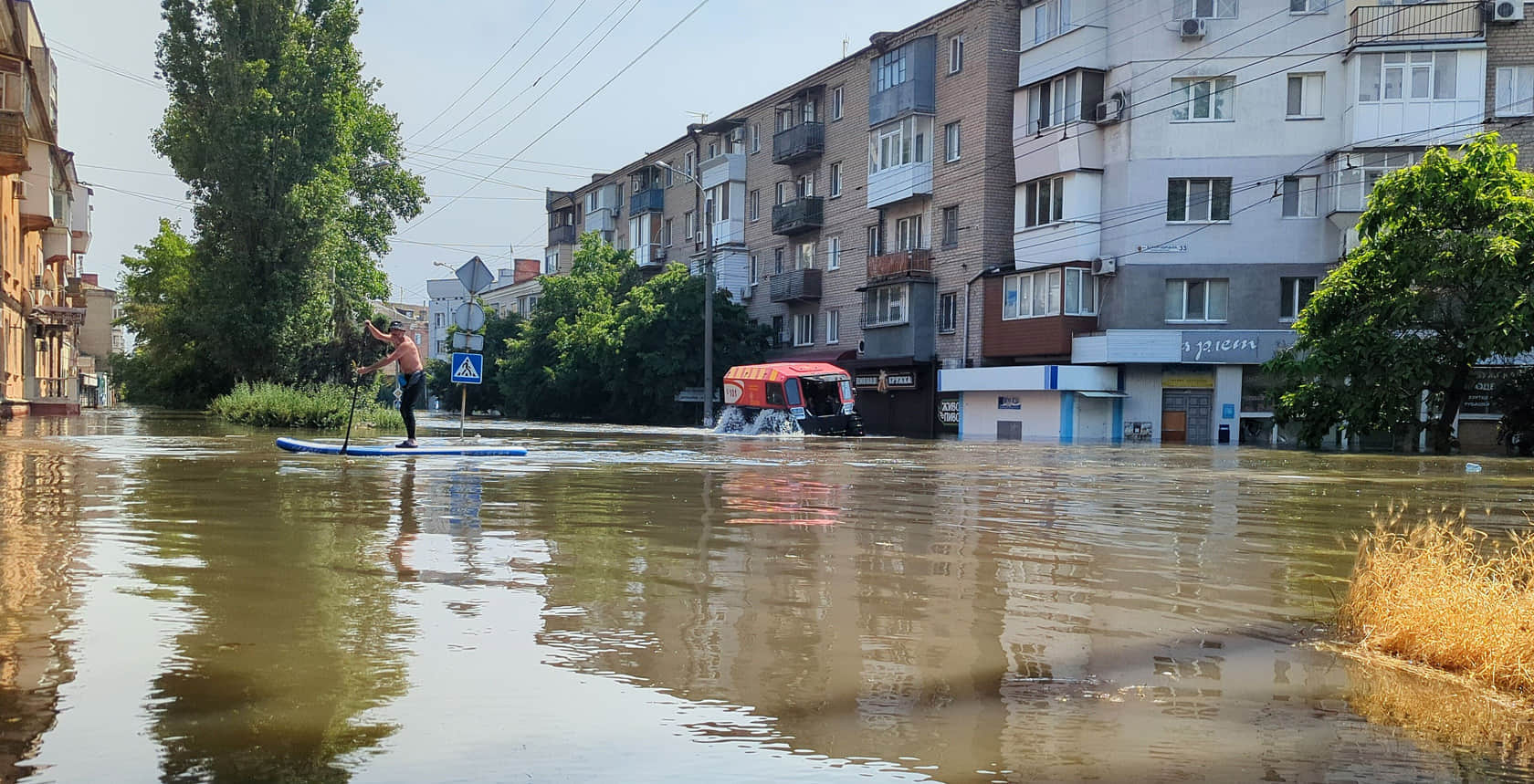
The situation is worst in the long-suffering Ostriv neighbourhood, which has been pounded by incessant Russian shelling since the liberation and is now a place where you can only get around by boat.
In two days, more than 2,000 people have been evacuated from Kherson, about 1,500 of them from the Ostriv neighbourhood.
Парк Слави, Херсон, зараз pic.twitter.com/w2PdDe3GFi
— Buderatsky (@Buderatsky) June 7, 2023
Amphibious all-terrain vehicles (ATVs) from the State Emergency Service, motor boats from the police and river services, ordinary inflatable rubber boats belonging to volunteers and local residents - anything that can float and get people, their property and their pets away from their flooded homes is being used.
Not everyone is ready to evacuate. Many people continue to live on the upper floors and flatly refuse to be persuaded by the rescue workers.
It is currently difficult to calculate the total number of people living in the city under constant shelling. So it is also difficult to predict how many more people need to be evacuated from the disaster area.

The Ark
On Vorontsovska Street, an evacuation boat docks at the "shoreline", which is gradually moving further and further up towards the Local History Museum.
"Why aren’t you speaking Ukrainian?" she says to one of the rescue workers who helps her out. "Okay, you can speak Russian. I was born in Russia myself. But I hate those bastards!"
Virgie, who was named after Virginia Woolf, is as calm as her owner.
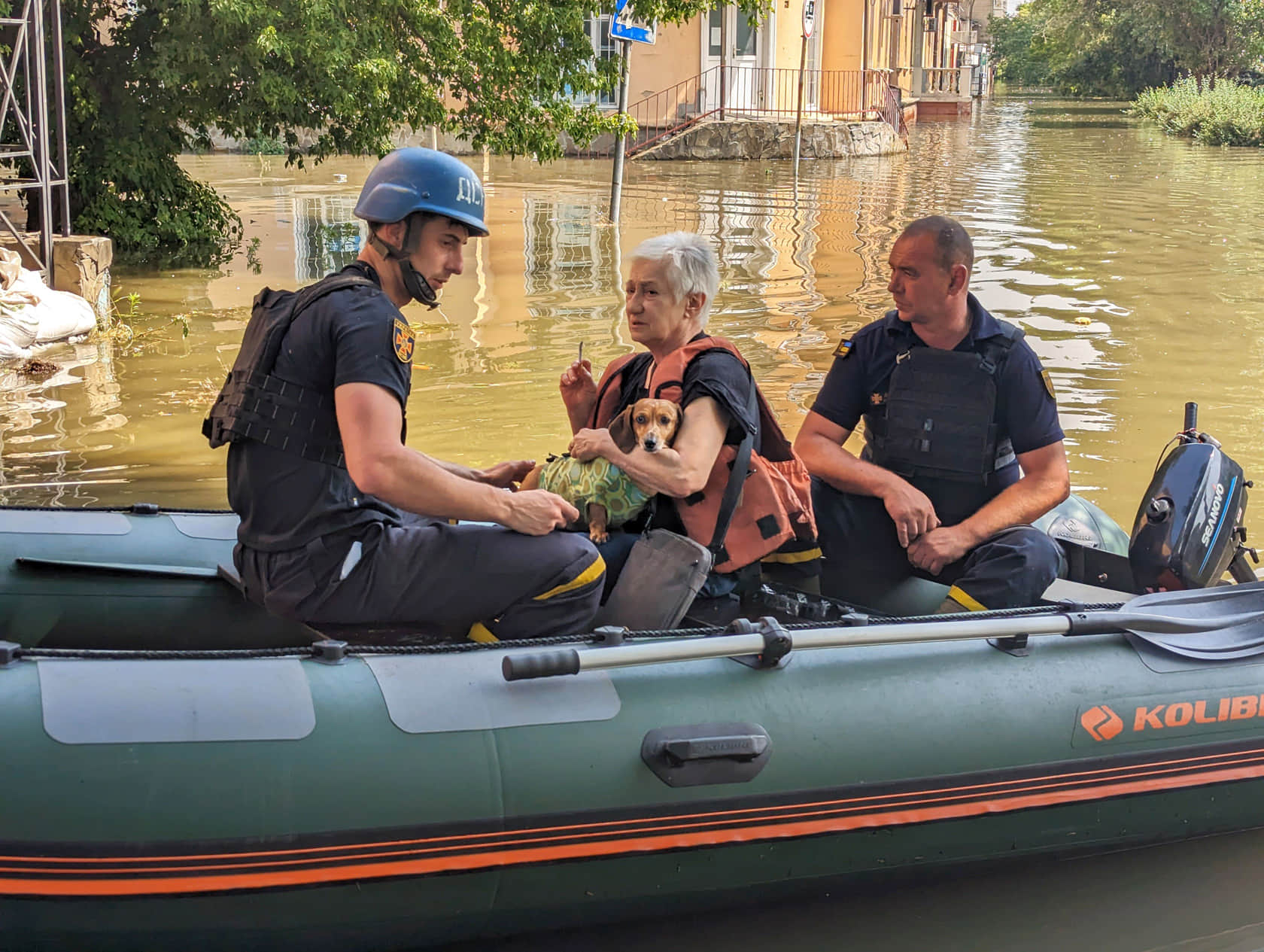
"She has heterochromia. Alexander the Great had it, too," Maryna says, explaining why her dog's eyes - which show no fear, only fatigue - are different colours.
"By the way, have we won yet?" the pensioner asks a Ukrainska Pravda journalist. "It's hard for me to be without a radio for two days."
Maryna, a former gymnastics coach who lost her eyesight a few years ago, learned about the blowing up of the Kakhovka hydroelectric power plant from the news.
On the evening of 6 June, she went to walk Virginia and felt that the water was already near her apartment block at 33 Bohorodytska Street.
"This morning the water was already in the entrance. I realised that I could become an eternal prisoner. I've been the only one living in the building lately, plus my neighbour on the ground floor," Maryna says.
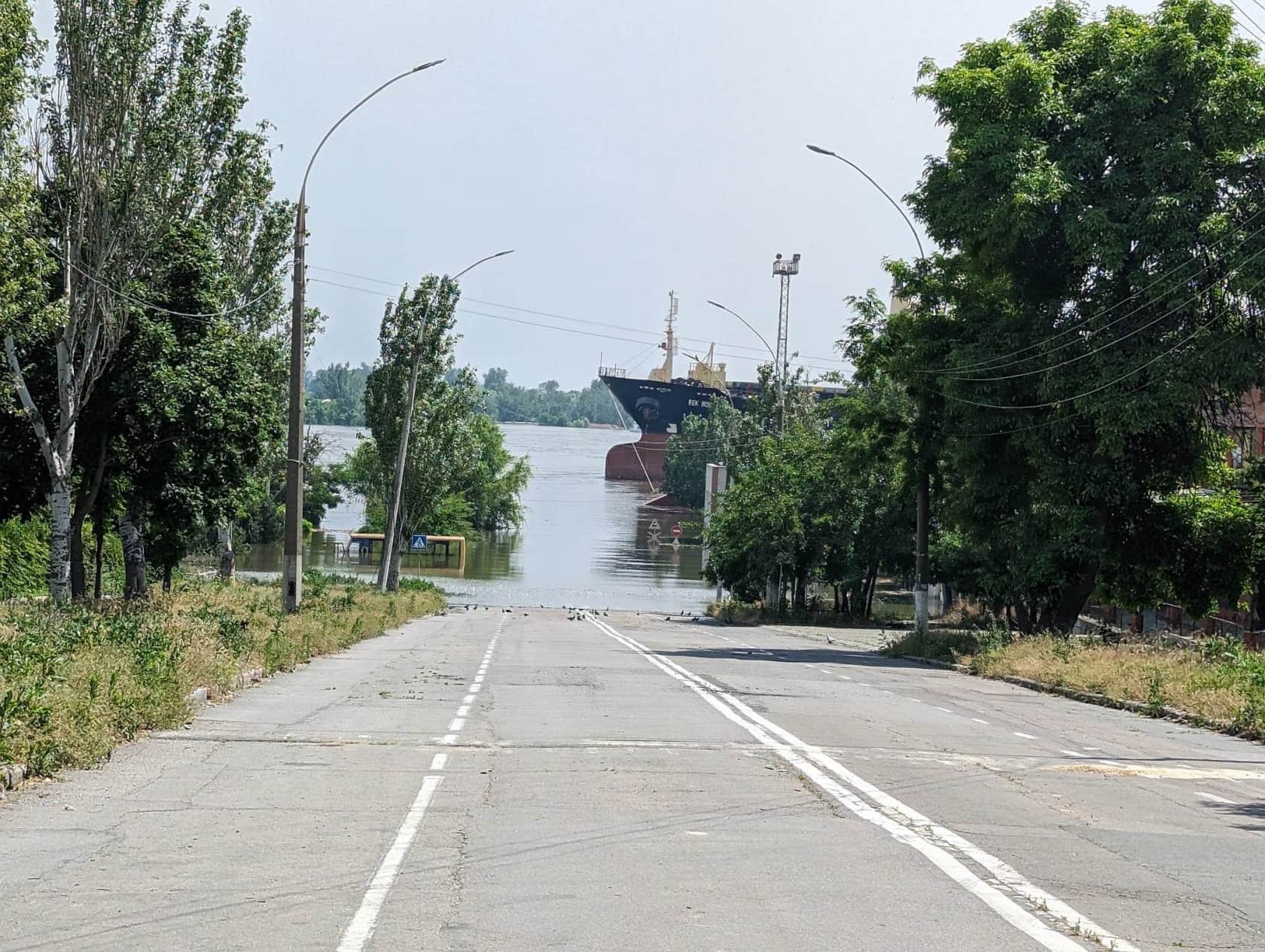

Maryna ignored the first call to evacuate. She shouted down from her third-floor balcony that she had ten other cats besides Virgie that she could not leave behind.
Like many Kherson residents, Maryna Havrylova shows amazing humanity.
"The main thing is that my animals are safe," she says. "I rescued two kittens recently. I heard them meowing and took them in. They could get lost here now. I wouldn’t even recognise them by touch."
The evacuation points in Kherson these days are like Noah’s Ark. There seem to be as many animals – whether exhausted, frightened or happy – as people.
By the evening of Wednesday, 7 June, several hundred animals had passed through the points on Vorontsovska Street, according to police: dogs, cats, chickens, rabbits, parrots.
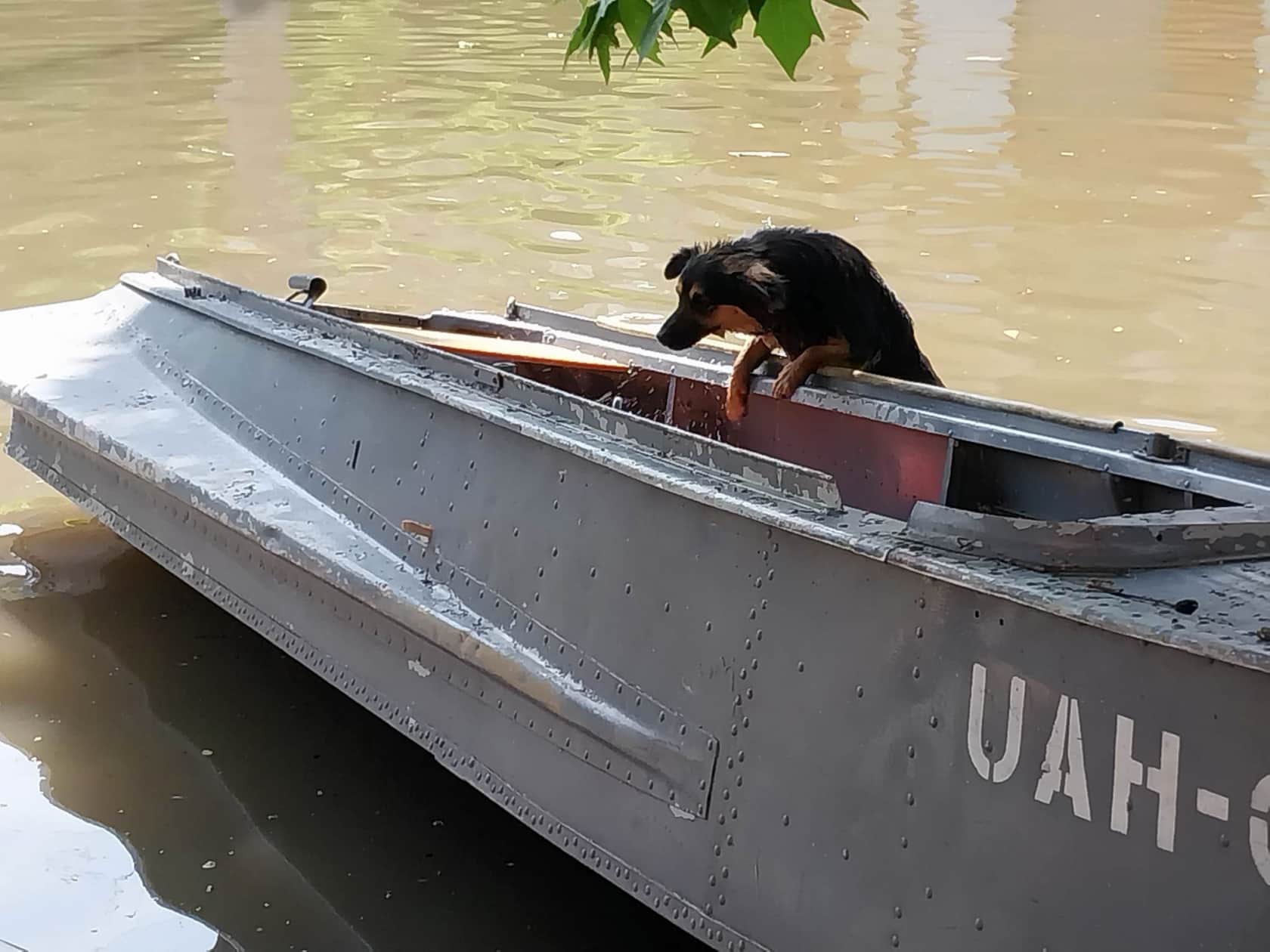
"Where's Dinka?" another woman cries out, barely able to get out of the boat. "I don't see Dinka! Where's Niuta? Was she there? And Sioma?"
"Hold on," her son Yevhen says soothingly as the old woman moves her trembling hand over a list in her notebook.
"We haven't counted them all yet. There should be 48 cats," Yevhen explains to a Ukrainska Pravda journalist. "We live with them in a three-room flat. My mum and I were planning to move to a house and set up a shelter. But it hasn't worked out yet because of the war."
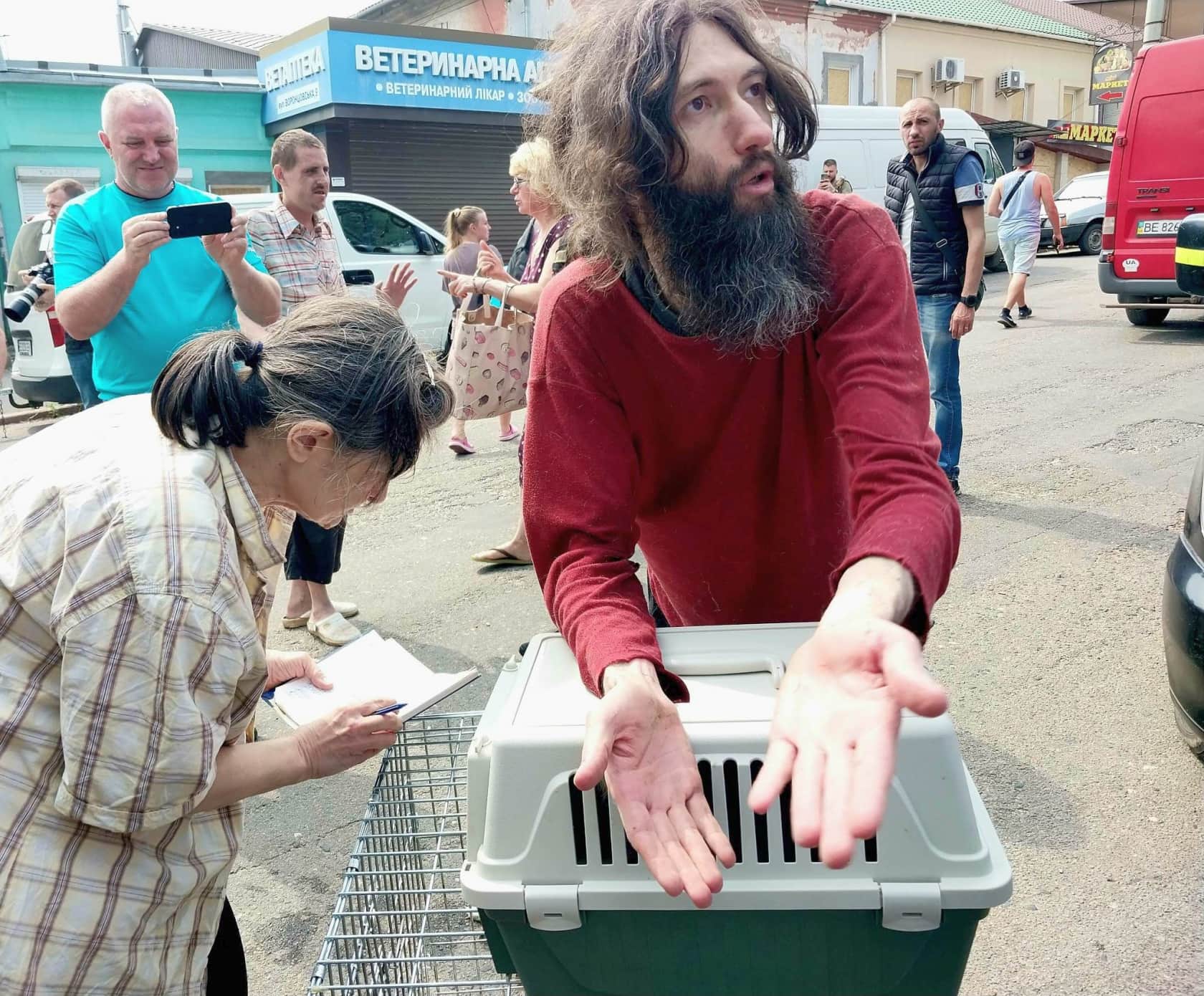
The dachas
"We don't abandon our own" [a Russian slogan used to justify the invasion]: these are empty words for Russians, but a matter of honour for Kherson residents.
During the flood days, Oleh and Serhii, who used to transport people along the Dnipro before the full-scale war, have been repeatedly sailing in their boats to the islands of the 'grey zone', which were actually under the control of the Russian army before the dam was blown up.
"Yesterday [on 6 June – ed.], the Russians evacuated only their own people: they had command and observation posts there. They left the ordinary people in their dachas," the men say.
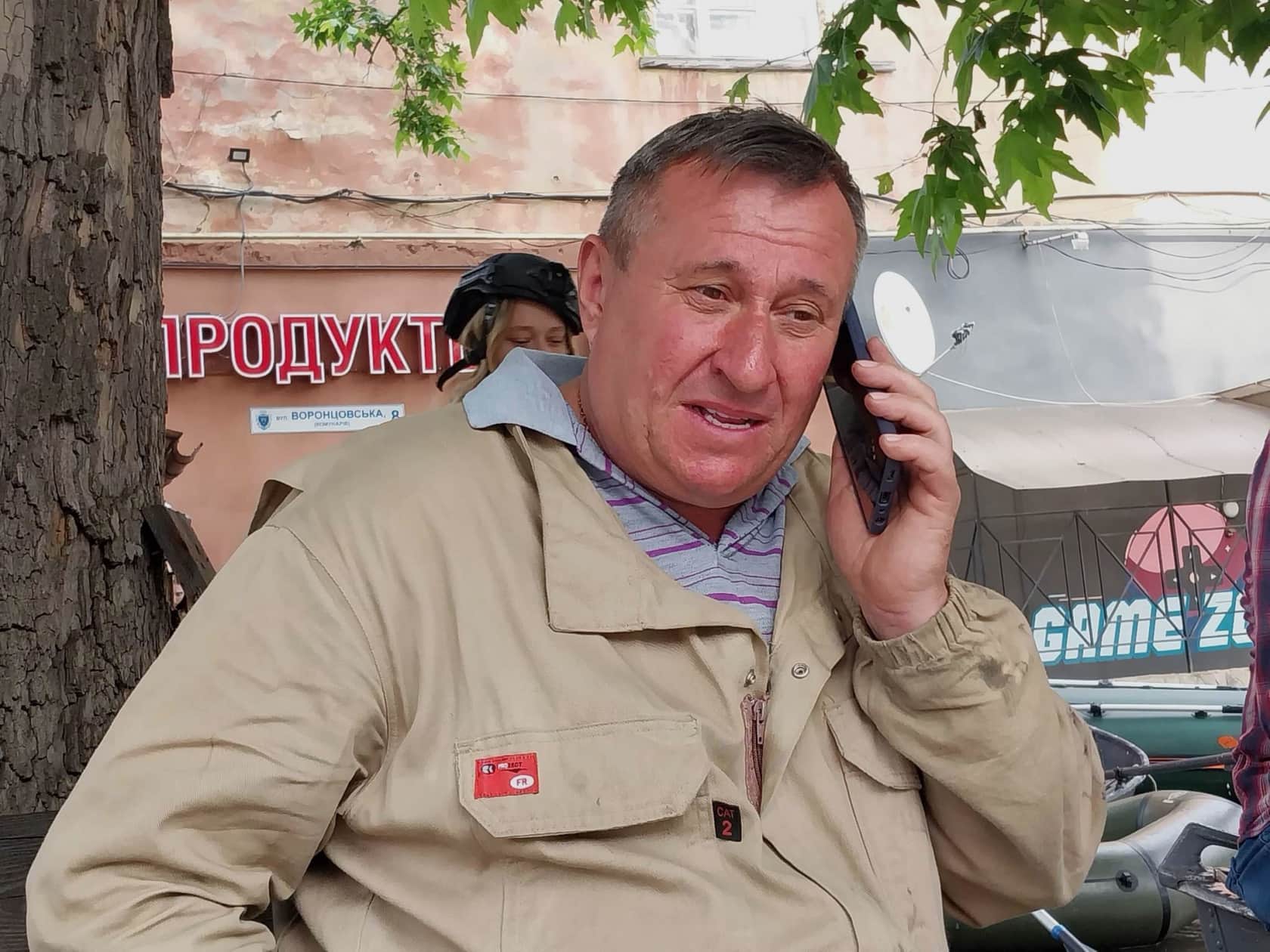
They were able to remove 16 people from the roofs of their houses on the flooded Potemkin Island and ferry them to Kherson City from the morning to the evening of 7 June.
"Getting there is quick, but it takes a long time to go back against the current," says Oleh. "Water is everywhere now. It’s a water ‘desert’ - you can only see the tops of trees and roofs. In the places where a yard used to be, you touch grape vines with the propellers."
Oleh is a former sailor; he has been sailing in the Sea of Azov and the Black Sea on fishing vessels for 12 years. This experience, together with an impeccable knowledge of the Dnipro River, makes him and his friend Serhii very valuable in the rescue operations.
"Everything is changing very quickly," says Serhii. "A landmark can be some tree, someone's roof. In addition, you look at the city – at the cranes [port cranes – ed.], at the towers, like a lighthouse."
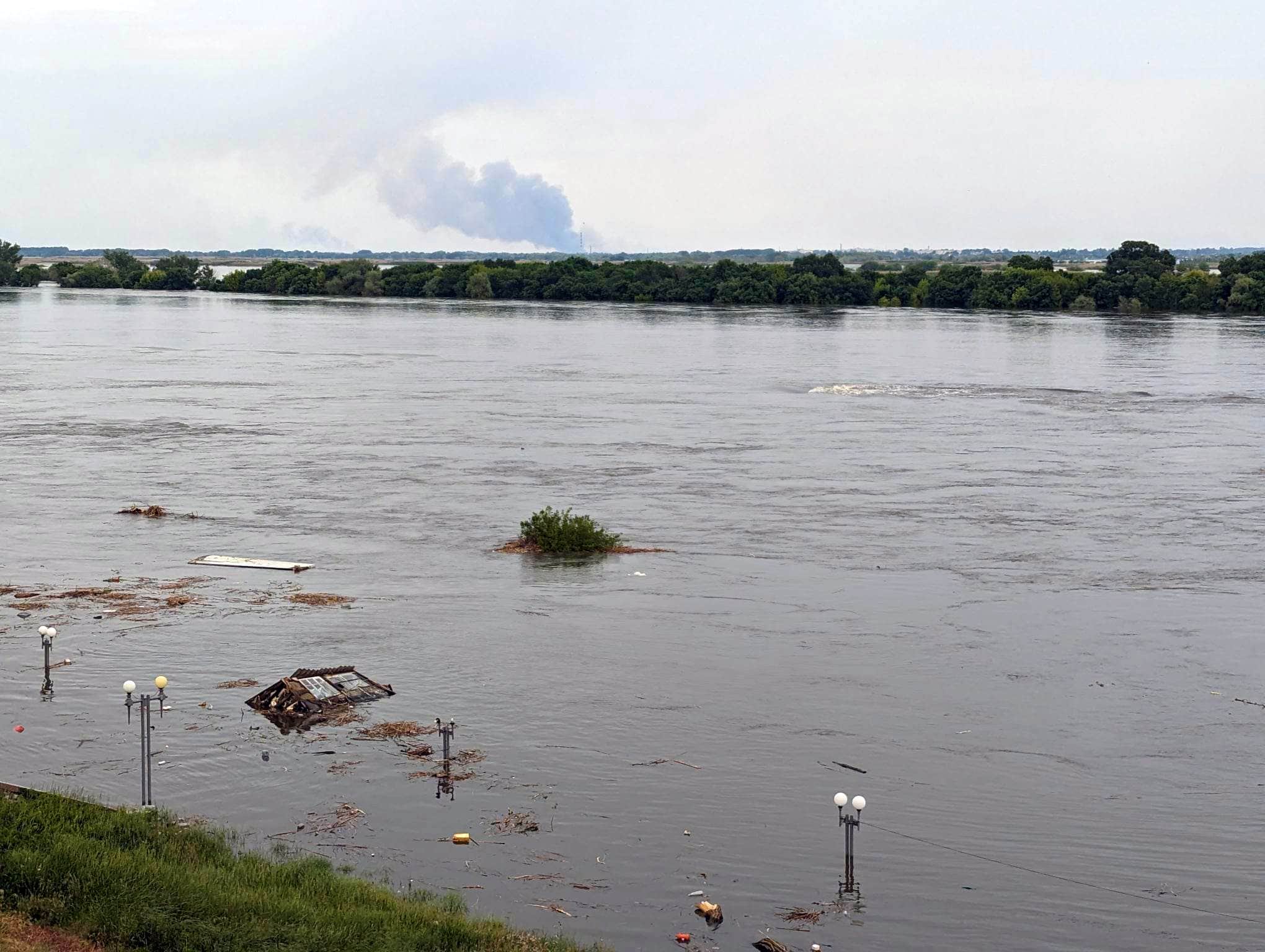
"To tell you the truth, we expected that there would be less water, but it keeps coming," says Oleh.
He too used to have a dacha on Bilohrudiv Island before the Russians came. It burned down during the liberation of Kherson. And now it has sunk.
Oleh never stops smiling, despite the drama and biblical scope of what is happening. Before setting off on a new evacuation trip, he says simply, without boasting:
"You cannot surprise the people of Kherson anymore."
At home
"Do you want anything to eat, madam?" a police officer asks. "No, you’re not just Madam. You are the best today!"
"I don't want anything," Liliia Ivanivna answers.
Only a few minutes ago, rescue workers were carrying the terrified pensioner from a boat in their arms. Now a happy smile can be seen on her face. It is not overshadowed even by the officers from the Security Service of Ukraine, or Ukraine's Defence Intelligence, who carefully check her documents and arrange some gentle questioning.

"We were evacuated from our dacha," Ivan Fedotovych, Liliia Ivanivna's husband, explains to the uniformed individuals concerned. "We lived there [on the islands under Russian occupation since 24 February 2022 – ed.]."
A lot of water came into his house in one day, on the night of 6-7 June, after the Russians blew up the dam.
"I woke up at night; something was making a noise," Ivan Fedotovych says. "I got out of bed, and the water was already in the house. I couldn't open the door. It broke the window. We climbed the folding ladder to the second floor, where our daughter and son-in-law were."
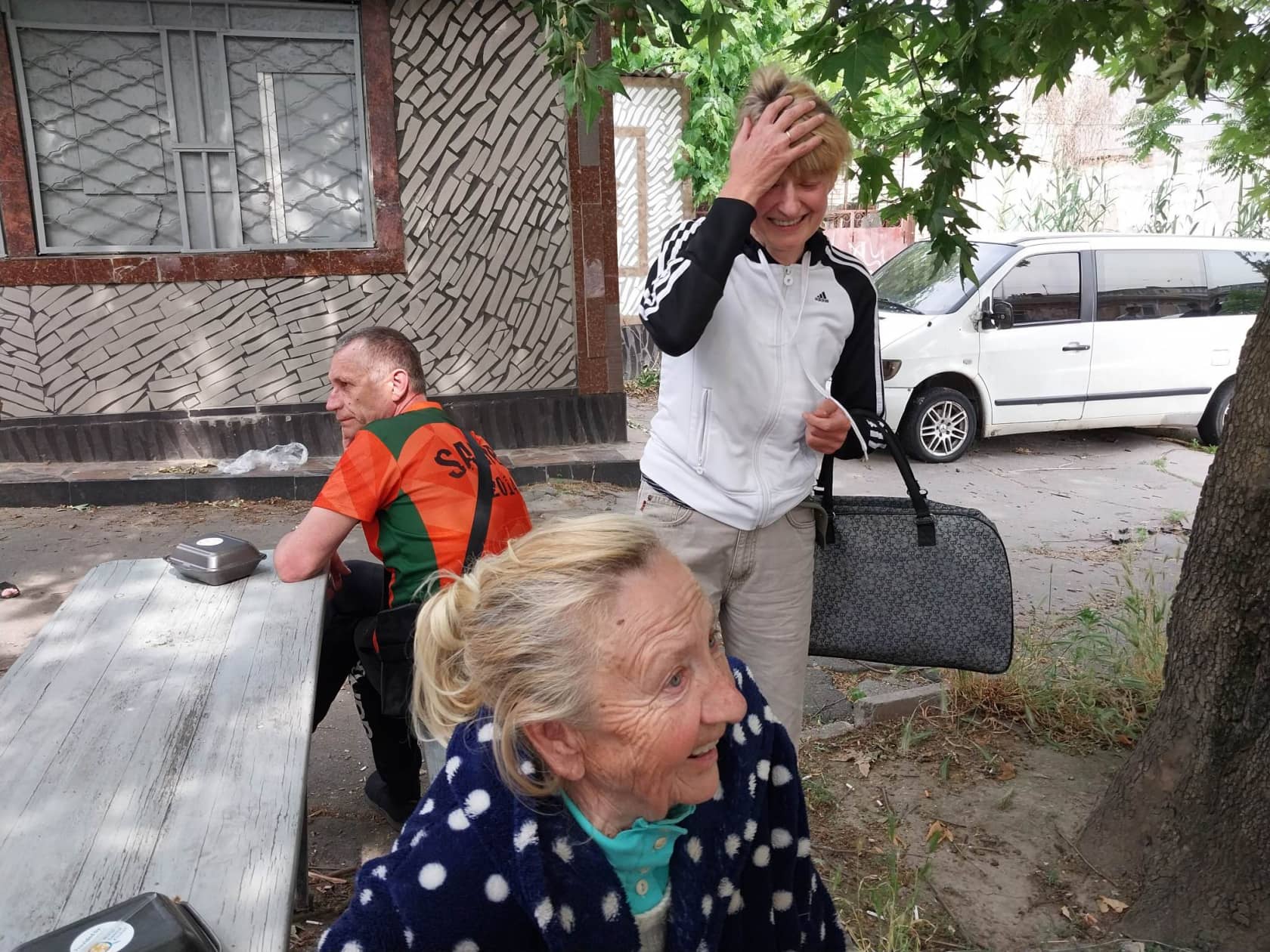
Victoriia Radchenko, Liliia Ivanivna and Ivan Fedotovych’s daughter, who was also rescued with her elderly parents, sometimes laughs and cries after she is brought to Kherson. She tells Ukrainska Pravda's journalists that she regularly visited her elderly parents and brought them food during the occupation.
Last autumn was the last time she went to the island, just before the liberation of Kherson itself. So she got stuck there. After the Russians withdrew from the right bank and moved to the left, the connection of the Dnipro River with the mainland was closed to civilians.
"Let them check! We are not afraid of anything. We have sailed home!"

Yevhen Rudenko and Yevhen Buderatskyi for Ukrainska Pravda
Translated by Myroslava Zavadska and Tetiana Buchkovska
Edited by Teresa Pearce and Susan McDonald